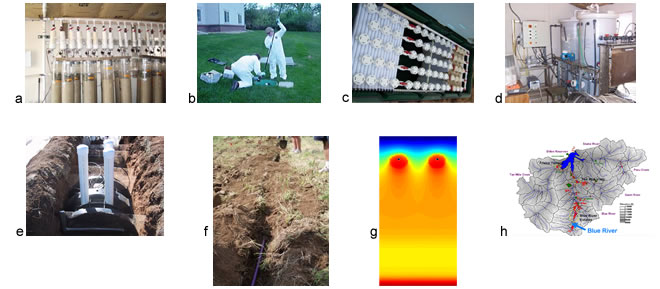Infrastructure for water and sanitation is essential for a healthy standard of living and it must be effective in preserving public health and environmental quality while being affordable, socially acceptable and sustainable. Centralized treatment and distribution/collection approaches are common for urban areas and population centers, but are neither cost-effective nor sustainable in many situations. For these situations within the U.S. and in developing countries, onsite and decentralized approaches and technologies are critical for sanitation to achieve the desired healthy standard of living. Onsite or satellite water and wastewater systems may involve an array of technologies such as filters, soil and wetland systems, and membrane units that can mimic natural processes to achieve treatment objectives while minimizing energy and chemical use and enabling beneficial reuse of water and nutrients. In addition, approaches involving minimum use fixtures, source separation, and reuse can enhance water infrastructure serving buildings and developments in urban areas.
The Small Flows Program was established at the Colorado School of Mines (CSM) in Golden, Colorado, to advance the science and engineering of sustainable onsite and decentralized approaches to water and sanitation. The overall goals of the Program are to enhance the quantitative understanding of processes important to system design and performance, and develop decision-support tools for applications involving individual houses and buildings all the way up to those involving large developments, communities, and watershed-scale situations (Figure 1).

Figure 1: Individual homes, developments, communities.
Recent and ongoing research has included field monitoring, laboratory and field experimental studies, and modeling (Figure 2) to:
- characterize wastewater effluents from domestic, commercial, and institutional sources with respect to routine properties such as organic matter, nutrients, and pathogens as well as emerging organic chemicals like pharmaceuticals and personal care products,
- determine the treatment mechanisms that can be exploited to purify water by removal of chemicals and microbes of concern,
- quantify the design and performance relationships for different unit operations including bioreactors, biofilters, soil units, wetland systems, and membrane units,
- evaluate the performance of full-scale systems and enable systems analysis regarding performance capabilities and reliability,
- assess the relative pollutant contributions to surface waters and ground waters from nonpoint and point sources and develop / validate watershed-scale models,
- develop source tracking tools using chemical and bacterial signatures to allocate water quality impacts to different sources, and
- develop decision-support tools to aid system design and operation to achieve a prescribed performance.
Selected Research Facilities & Activities

Figure 2: (a) 1-D column lysimeters; (b) field monitoring of emerging organic chemicals; (c) textile biofilter at Mines Park; (d) membrane bioreactor at Mines Park; (e) test cells to study soil treatment at Mines Park; (f) drip dispersal network at Mines Park; (g) numerical modeling using HYDRUS 2-D; (h) Dillon watershed where watershed-scale modeling and monitoring were completed.